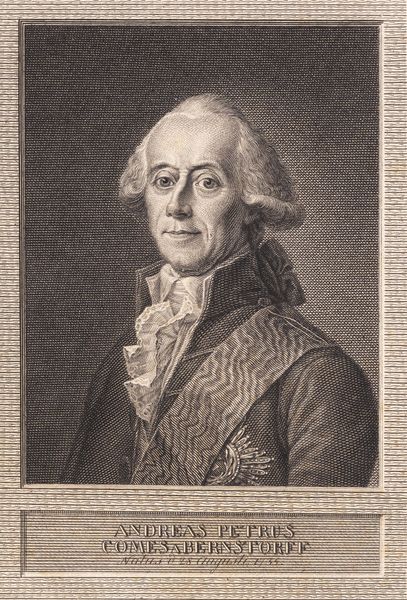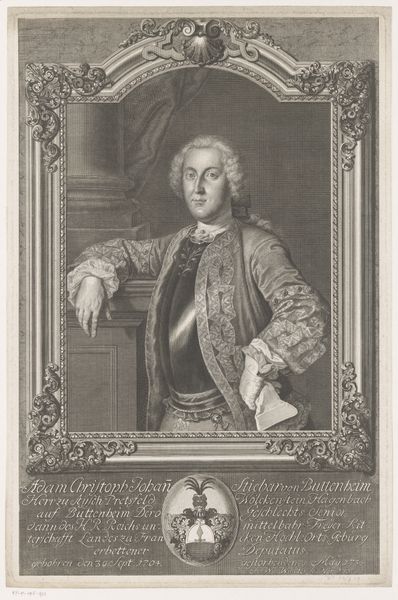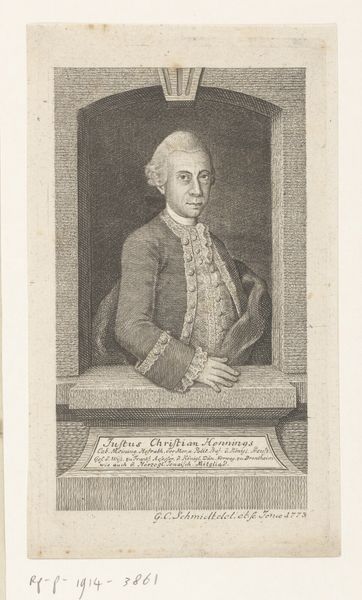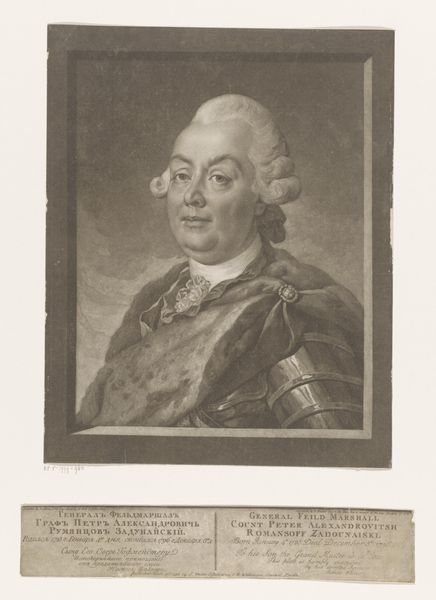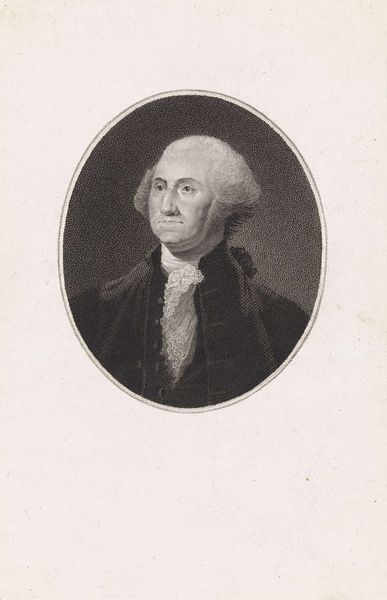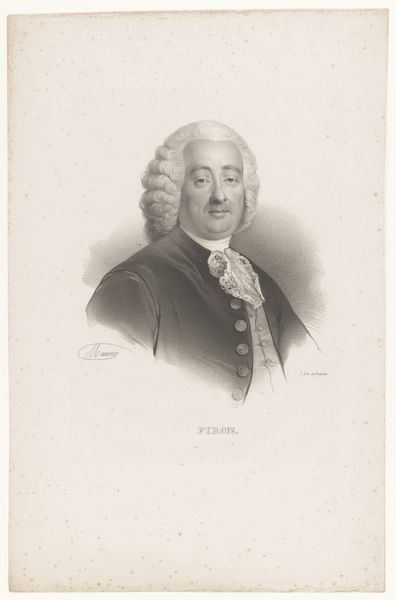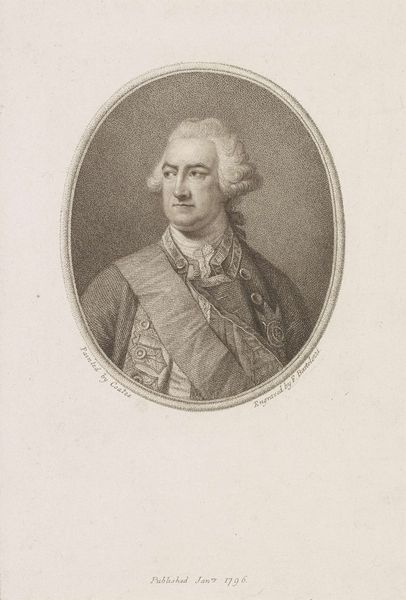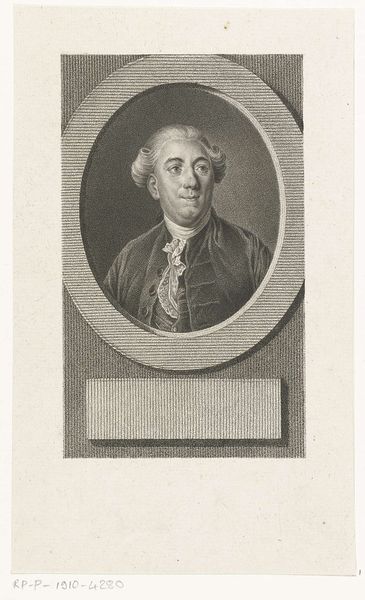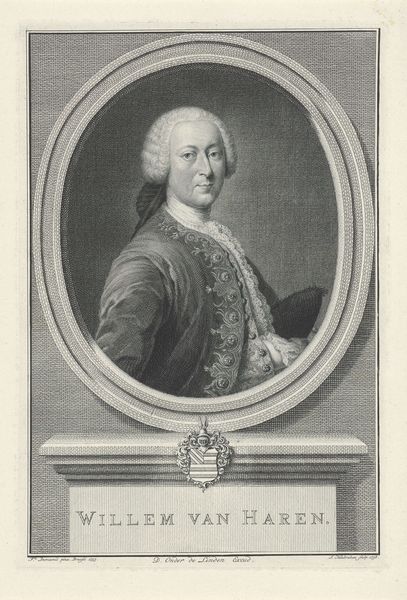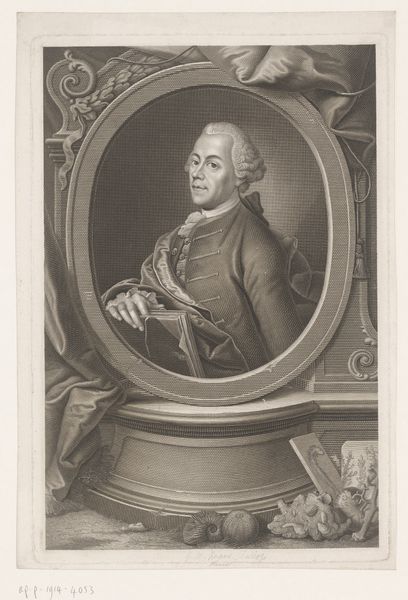
print, etching, engraving
#
portrait
#
neoclacissism
# print
#
etching
#
engraving
Dimensions: 376 mm (height) x 280 mm (width) (bladmaal), 371 mm (height) x 275 mm (width) (plademaal), 332 mm (height) x 238 mm (width) (billedmaal)
Curator: Looking at this etching and engraving of A.P. Bernstorff—dated between 1748 and 1831, part of the collection at the SMK—the first thing I notice is how serene and stately he looks. There's a real sense of calm intelligence. Almost a wink. Editor: Bernstorff's portrait, crafted through etching and engraving techniques, offers us a glimpse into the visual language of power during the late 18th and early 19th centuries. The neo-classical style employed serves to legitimize and ennoble his status. Think of him as a personification of enlightened aristocracy. Curator: The detail is incredible, especially on the ruffles of his collar and the fabric of his coat. You can almost feel the weight and texture. It is interesting to imagine the painstaking effort involved in creating this print. What do you make of the lack of vivid color? Editor: The absence of color underscores the emphasis on form and line, key tenets of neoclassicism, also prints had the advantage of allowing greater distribution than painted portraits. Bernstorff’s representation through the objective rationality inherent in the print medium aimed to broadcast the qualities of enlightened leadership—restraint, intellect, and a commitment to order. The lack of warmth emphasizes the weight of responsibility and a detachment from emotional excess. Curator: It is intriguing how this artistic style was employed to convey such messages of power and control through form. Is that not a little unsettling when thinking of him as a man, a political figure of his era? Editor: Neoclassical portraiture aimed to convey specific social and political values. The stern but enlightened paternalism reflected the political and philosophical underpinnings of the era, marking its leaders through similar and accessible, although always elegant, aesthetics. Understanding it now means unveiling the mechanics by which elites built and sustained their influence. Curator: So much weight! He seemed jolly enough from the outset. This look under the surface brings out such somber echoes, really. Editor: Portraits like these offer a glimpse beyond the veneer of formality, a look into the socio-political structures. Curator: It is the artist's trick, making the serious frivolous and the frivolous serious, is it not?
Comments
No comments
Be the first to comment and join the conversation on the ultimate creative platform.
